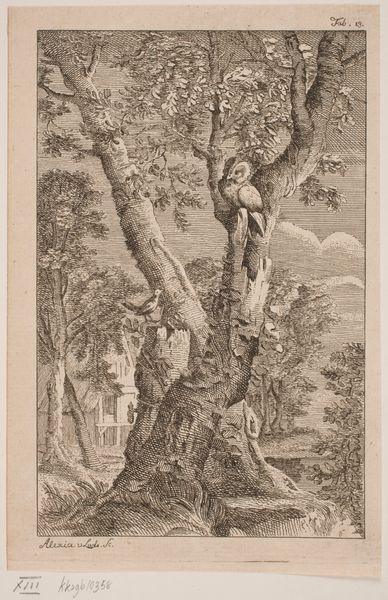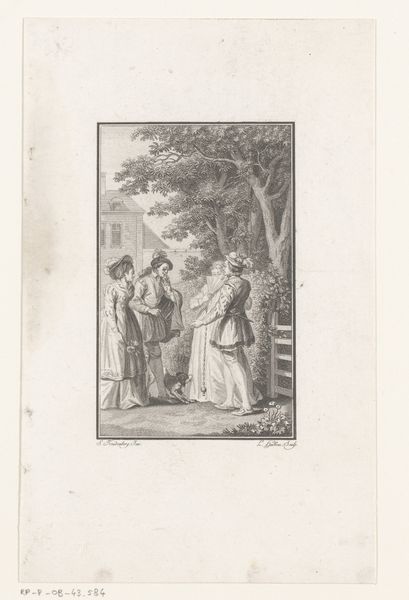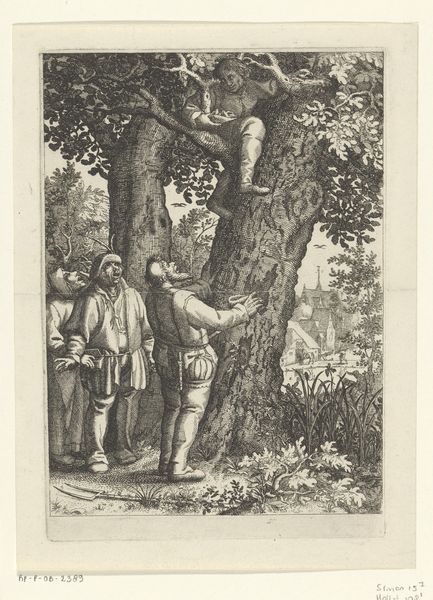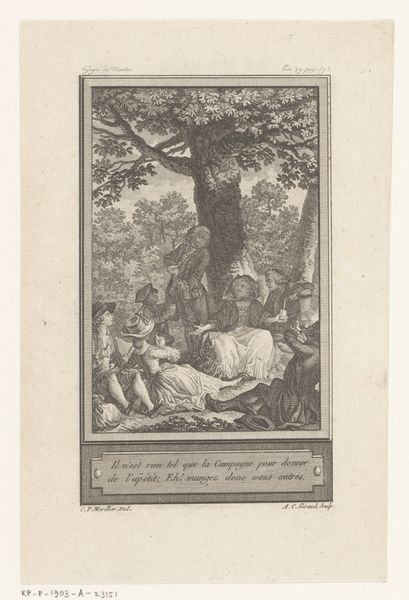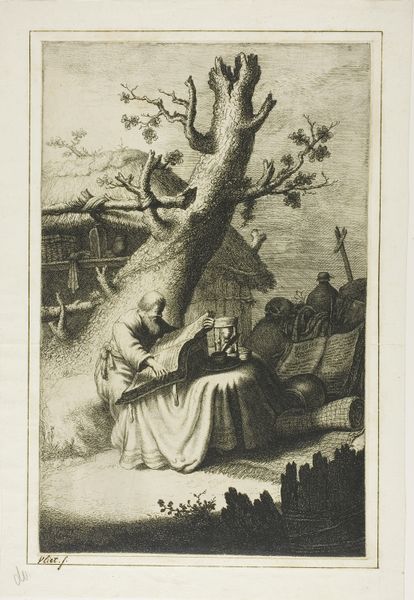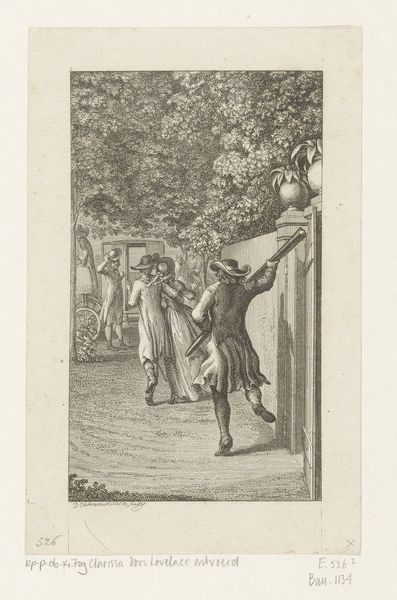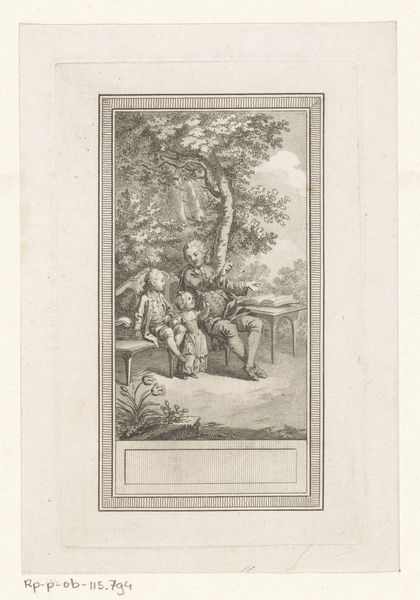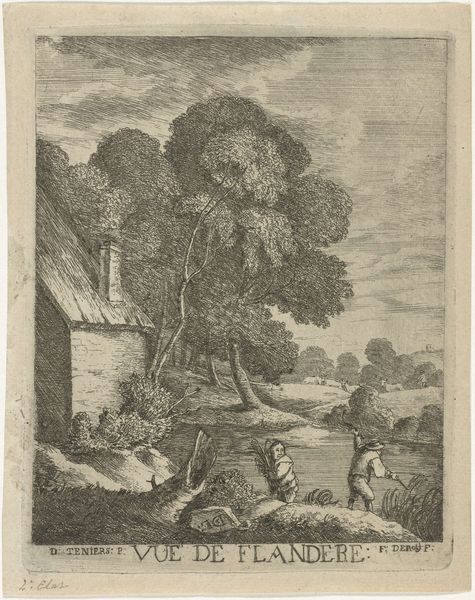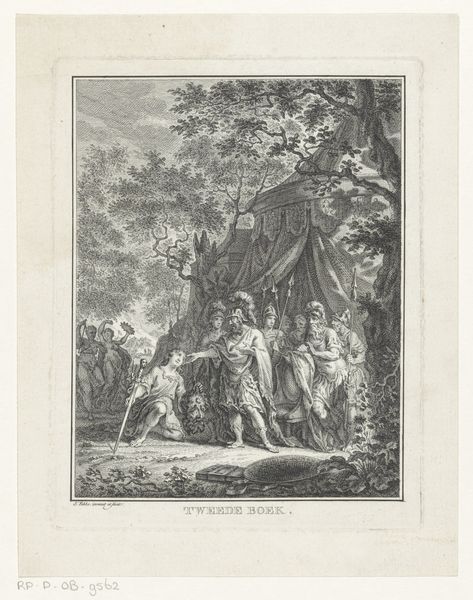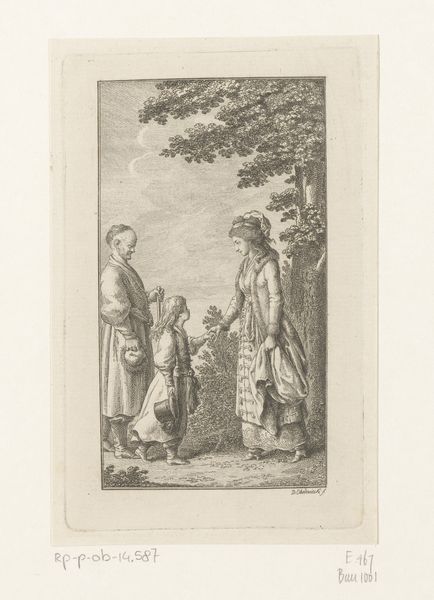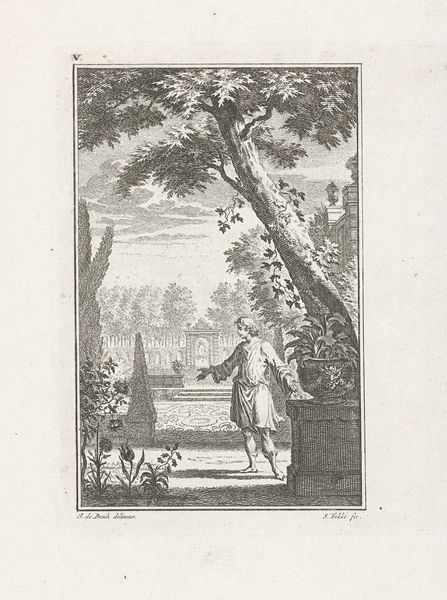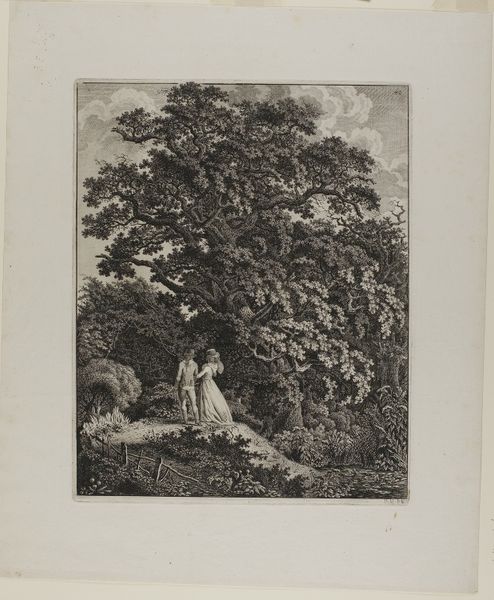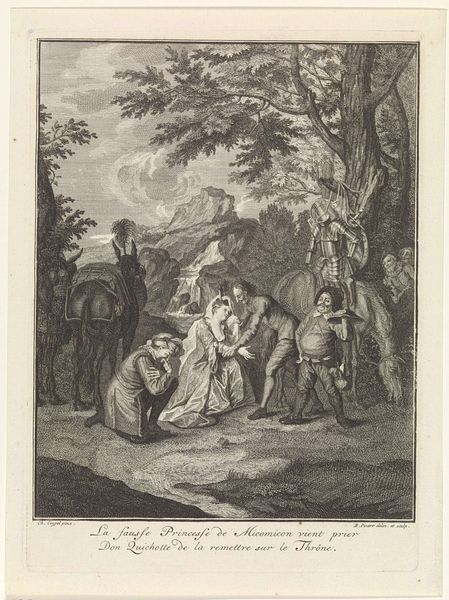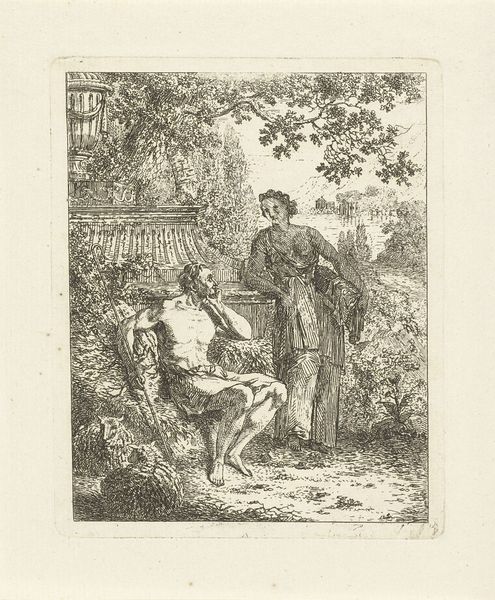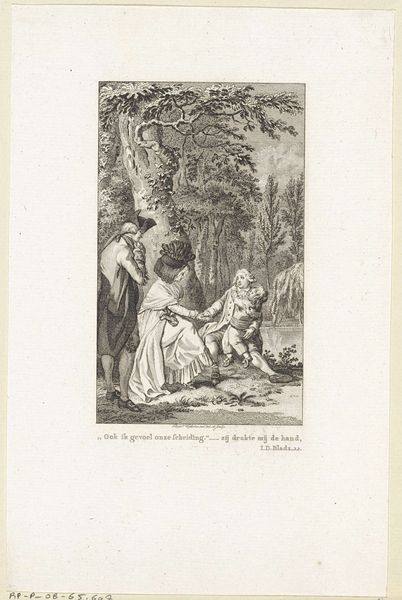
Dimensions: height 162 mm, width 91 mm
Copyright: Rijks Museum: Open Domain
Curator: Here we have Reinier Vinkeles' engraving, "Herfst," created in 1769. It's a busy orchard scene. What’s your first impression? Editor: It strikes me as surprisingly idyllic for a scene about labor. There’s a calm attentiveness despite all the activity, the harvest taking place on different levels from the tree to the ground, and in the distance, across the water. Curator: Vinkeles was a key figure in the Dutch Republic's artistic scene. We need to situate this work within the broader history of Dutch printmaking and consider the rising mercantile class who consumed these images. Does it speak to a particular cultural moment? Editor: Absolutely. These prints, intended for a wide audience, reflect the values and aspirations of the burgeoning middle class. The orchard could be seen as a celebration of prosperity and the fruits of one’s labor, literally and figuratively. It’s a carefully constructed narrative. The scene depicts all sorts of participation, each member contributing. Curator: Indeed. And how does the work engage with existing social structures? Look at the depiction of labor – is it romanticized, or is there a hint of social commentary? The family in the center stands as an example of how things should be, the father on the ladder harvesting, the children eating, and the mother catching the fruit. This is a scene of bounty. Editor: I see your point. While seemingly benign, these depictions often subtly reinforce societal norms. What is conspicuously absent are any suggestions about what is happening elsewhere that allows these images to represent reality. One question to consider is whether it only offers a highly selective vision of rural life during that era. It makes you wonder how a piece like this functions in maintaining specific social arrangements. Curator: Precisely! The politics of imagery are often veiled, especially in genre scenes like this. Its impact then lay in perpetuating notions of progress and industriousness central to the Republic’s identity, where its citizens would encounter these ideals reproduced and made ordinary. It invites critical questions regarding its representational role in 18th-century Dutch society. Editor: Thinking about "Herfst" in terms of its intended audience and the societal narratives it reinforces has definitely broadened my understanding of its significance. Curator: And for me, viewing it as a document of socio-economic ideology shows it is always revealing in how even apparently calm scenes engage very actively with the world.
Comments
No comments
Be the first to comment and join the conversation on the ultimate creative platform.
